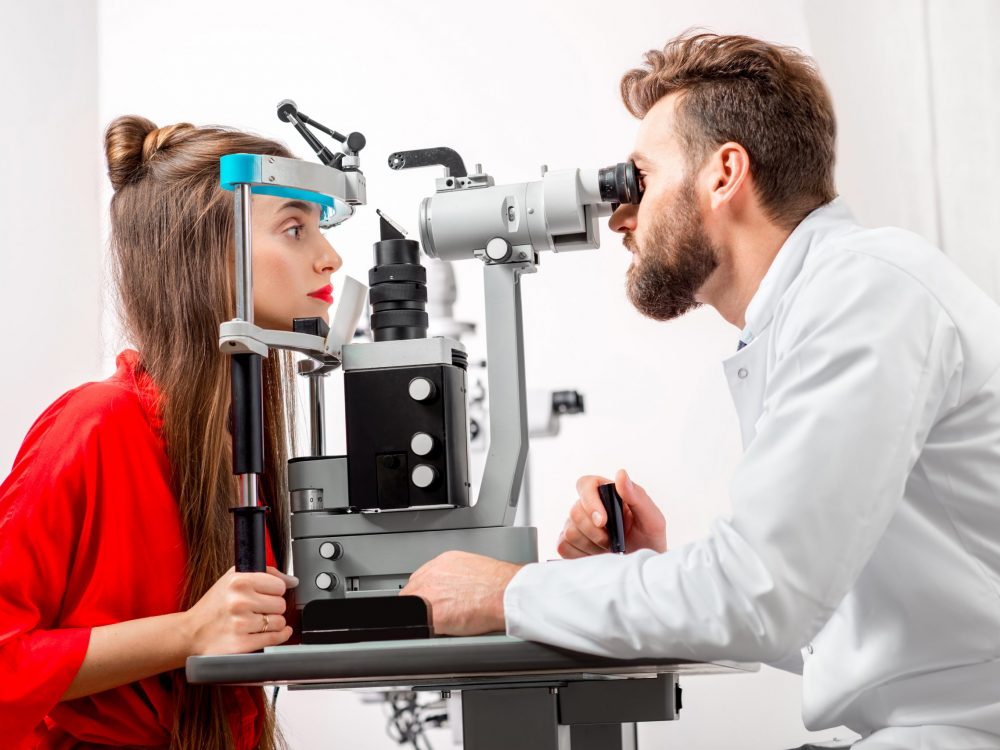
The Ethical Council of Optometry (OEN in Finland) has published the first two clinical guidelines for optometrists: cataract and anamnesis. The aim of these guidelines is to support optometrists in their work in the face of changing legislation and an ageing population, and to ensure that clients with eye problems always receive a consistently high quality of vision testing.
The Ethical Council of Optometry (OEN in Finland) has published the first two clinical guidelines for optometrists: cataract and anamnesis, the medical history. More guidelines will be published by next summer.
The clinical guidelines are based on the OEN’s guidelines called Hyvä optometristin tutkimuskäytäntö / Good Optometric Examination Practice. The purpose of the clinical guidelines is to support optometrists to do the right thing and to provide more detailed guidance on the examination and treatment of clients with certain eye health problems, such as cataracts.
The clinical guidelines will also help optometrists to prepare for the abolition of Article 16 of the Decree of Health Care Professionals according to the government’s decision on the spending limits in spring.
Riikka Torvela, Chairperson of the Finnish Professionals of Optometry (Suomen Optometrian Ammattilaiset ry Soa), sees the clinical guidelines as an important addition to the optometrist’s toolbox.
“Clinical guidelines will play an important role in supporting practitioners in their work when Article 16 of the Decree of Health Care Professionals and the restrictions associated with it are removed in the near future. The guidelines will also be useful for students of the profession in the future.”
Clinical guidelines support the optometrist’s work with an ageing population
An optometrist is often the first health professional to whom people turn when their vision deteriorates or when they start to have eye symptoms. Optometrists already see a large number of clients with a variety of eye conditions and this number is expected to increase in the coming years.
Our population is ageing and ageing is the main risk factor for cataracts. This clinical guideline on cataracts focuses on geriatric cataracts, classified according to their mode of onset. The clinical guideline includes, among other things, factors that optometrists should pay particular attention to during the eye examination and what to tell the client.
Panu Tast, CEO of the Finnish Association of Vision and Eyecare NÄE, describes the clinical guidelines as coming at an excellent time for optometrists.
“With the removal of age-old constraints in the near future, optometrists will finally be able to use all their expertise. Our member companies are strongly committed to making the clinical guidelines part of their own practices. The guidelines provide optometrists with research-based guidance on the most common eye health problems.”
A good medical history to guide your eye health examination
The clinical guidelines based on anamnesis, the medical history, support the optometrist in identifying the client’s visual and eye health problems. The purpose is to gather information about the functioning of the visual system and factors that may predispose to certain general and eye diseases. It includes basic information about the client, vision-related information, symptoms and medications, lifestyle and other factors affecting health.
“Finland is the last Nordic country to start publishing clinical guidelines for optometrists. In other Nordic countries, opticians and optometrists have been an integral part of primary health care for decades. We are reaching this point with the imminent abolition of Article 16 of the Professional Practitioners Regulation,” says Tiina Toivonen, Chairperson of the Ethical Council of Optometry.
The clinical guidelines have been drawn up by the Ethical Council of Optometry. The guidelines are based on the final theses of the Oulu University of Applied Sciences, Master’s degree in Clinical Optometry, and include a review of international and national research evidence.
The Ethical Council of Optometry (OEN in Finland) guides and supervises the professional practice of optometrists, i.e. licensed opticians. The OEN is coordinated by The Finnish Professionals of Optometry Soa and Finnish Association of Vision and Eyecare (NÄE).
Finnish Association of Vision and Eyecare (NÄE) is a member of the Federation of Finnish Special Commodity Trade (ETU ry) and an industry association of Finnish Commerce Federation and Suomen Yrittäjät. We comprehensively represent optical stores providing optometrist, ophthalmologist and eye laboratory services and manufactures, importers, wholesalers serving the industry, as well as professional and training organizations. NÄE is responsible for lobbying business and health policy issues in its sector.
Suomen Optometria Ammattilaiset Soa / The Finnish Professionals of Optometry Soa is a labour union of optometrists, optometry students and people working in the field of vision care. Soa is part of the Federation of Special Service and Clerical Employees Erto.
For more information
Panu Tast
CEO, the Finnish Association of Vision and Eyecare NÄE
+358 40 542 2227, panu.tast@naery.fi
Riikka Torvela
Chairperson, The Finnish Professionals of Optometry Soa
+358 40 538 5108, riikka.torvela@erto.fi
Tiina Toivonen
Chairperson, The Ethical Council of Optometry (OEN in Finland)
+358 41 528 5679, tiina.toivonen@yrittajat.fi


